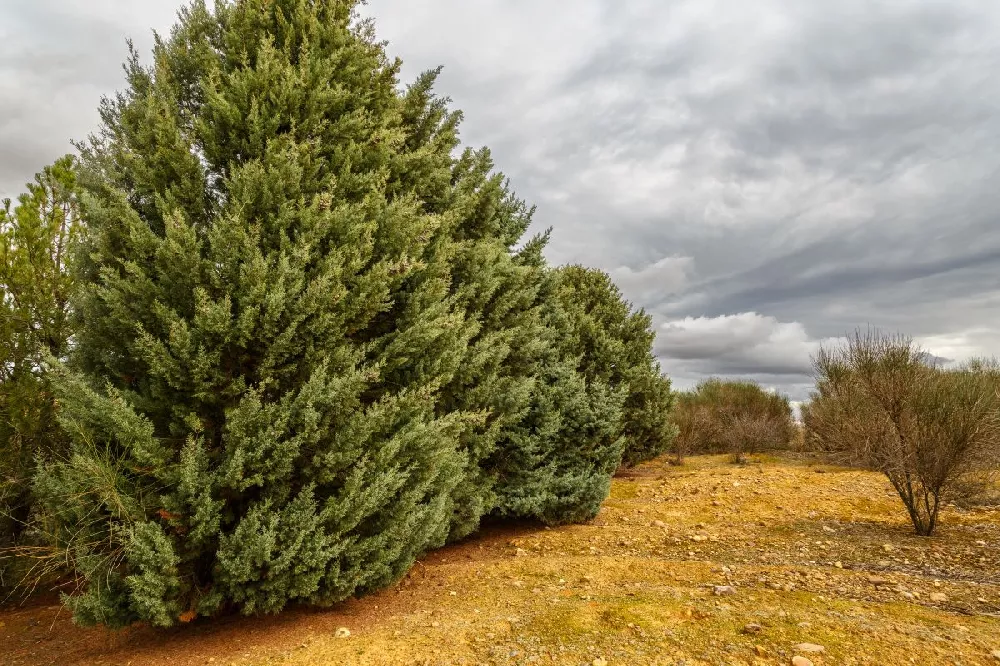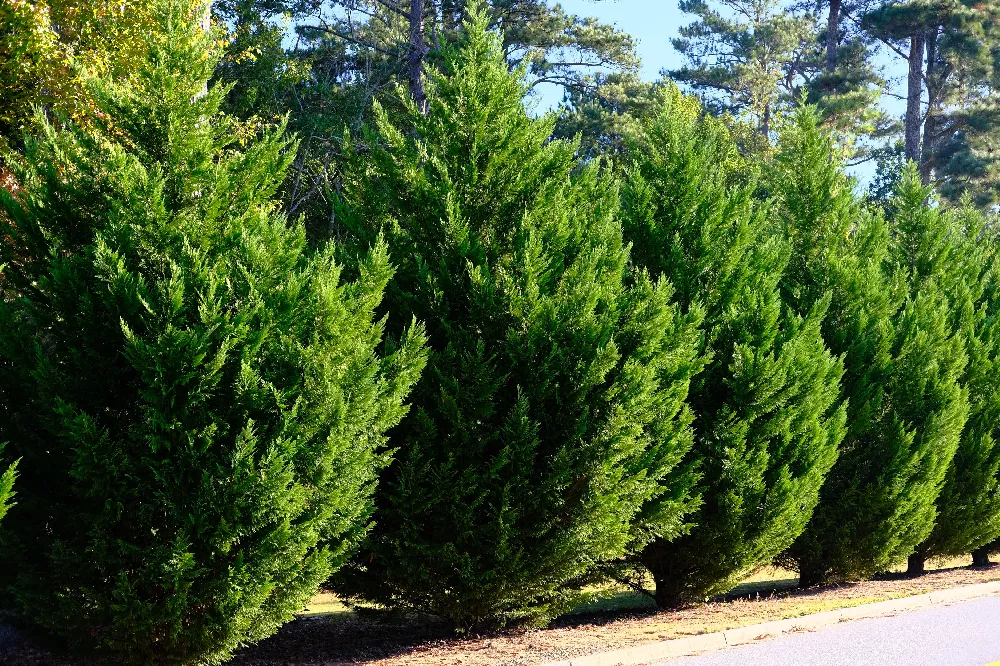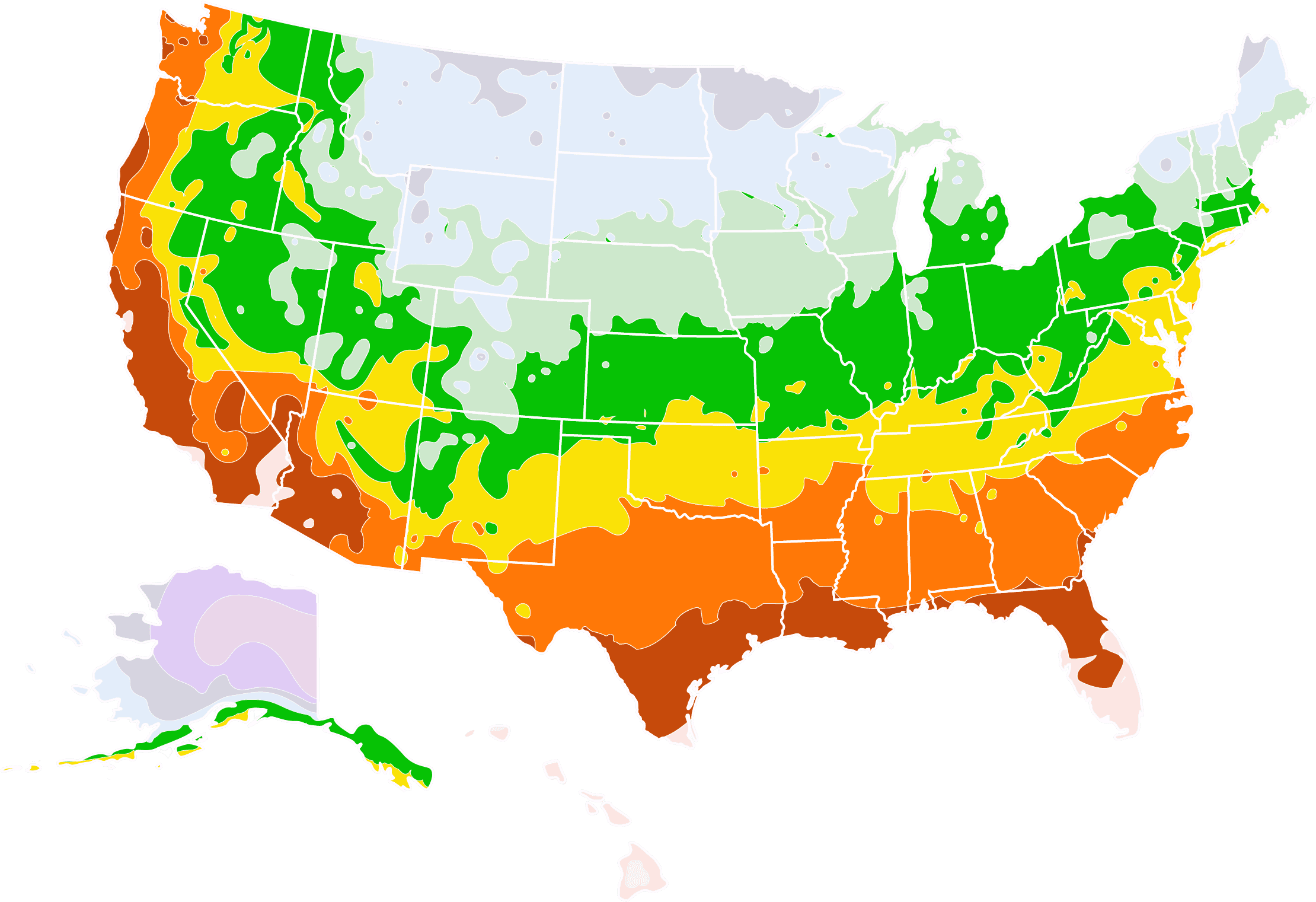- Home >
- Privacy Trees >
- Drought Tolerant Evergreen
Drought Tolerant Evergreen for Sale - Buying & Growing Guide
- Ships in 1-2 days
- 1-Year Warranty Eligible
- Pots or accessories are not included unless specified in the product options.
Shipping Details:
Once your order is shipped, you’ll receive an email with a tracking number and estimated delivery date. Most orders ship immediately, but some items are seasonal and may only ship in spring or fall. These products are noted on the website.
If you want a tree that can easily handle anything you throw at it and that will thrive on neglect, look no further than the drought tolerant evergreen. Also known as Arizona Cypress, Cupressus arizonica, the name says it all: this is a tree that manages to thrive in the driest of desert conditions. But that's hardly the only reason to love this stately tree. It has a dense, bushy canopy of blue-green leaves that make for an excellent privacy fence or windbreak, and the fact that it can handle robust pruning means you can shape it as you will, whether you're looking for a boxy, flat-topped hedge or a tall, angular focal point in your front yard. Need more convincing? Here are a few more reasons to love the drought tolerant evergreen:
- The drought tolerant evergreen adapts to various types of soil, including clay, sand, and loam.
- Although it can be pruned for shape, it will achieve a pleasing pyramidal form without any pruning.
- It grows quickly, putting on a foot or more of new growth each year.
Plant Care
Sunlight

Drought tolerant evergreens do best in full sun — at least six hours of sun a day — but they can handle partial shade.
Watering
Once your tree is established, it should not need supplemental watering except in very extended droughts.
Fertilizing

This tree needs just an occasional light feeding with a balanced product such as a 12-12-12 formula.
Planting and Care
Planting instructions
Although the drought tolerant evergreen can handle some shade, it will grow more quickly and robustly in full sun, so plant your tree where it will get six or more hours of direct light a day, in soil that drains well. Prepare the site by digging well-rotted compost or manure into the soil and mixing it well. Unpot your sapling and tease out any encircling roots, which can girdle the tree and slowly kill it. Dig a hole that’s as deep as the root ball and twice as wide. Place the tree in the hole, spreading out the roots. Holding it upright and steady, fill in around the roots with the compost-enriched soil. Water thoroughly. Apply a 2- to 3-inch layer of organic mulch, such as bark chips, around the root zone to conserve moisture and hinder weed growth, keeping it from touching the trunk, which can cause rot.
Watering and nutrients
When your tree is still young, give it about an inch of water a week for the duration of the first growing season. After that, you can taper back on watering. Regular rainfall should be enough to give the tree the moisture it needs. To check, however, you can dig down 3 inches by the root zone and see if the soil is dry there. If it is, give your tree some water. Drought tolerant vergreens are light feeders and do not need regular fertilizing. If the leaves begin to lose their color, you can give your tree a light feeding of a balanced, slow-release product designed for evergreens or landscape trees, such as a 12-12-12 formula.
Pollination
Drought tolerant evergreens are monoecious, meaning the male and female reproductive organs are on the same tree. As a conifer, these trees have cones rather than flowers, with the male cones producing pollen and female cones maturing and producing seeds in the fall.
Pruning
The only required pruning for Drought tolerant evergreens would include pruning out dead, diseased, or damaged branches, which can be done whenever you see them. Some gardeners trim back these trees to a more formal shape to be used as a hedge, which can be undertaken as needed throughout the growing season.
Pests and diseases
One of the most common pests of the Arizona Cypress is the cypress bark beetle, which can be found throughout the tree’s native range in the Southwest. However, they seldom bother healthy trees, so the best way to handle them is to care properly for your drought tolerant evergreen. Prune out any evidence of infestation and avoid leaving leaf litter on the ground around the tree. Diseases include cypress canker and branch blight, which are both fungal in nature and may damage or kill these trees. Avoid leaving open wounds on the tree from pruning to diminish the possibility of infestation by the fungus.
Achieving maximum results
You may be wondering how to incorporate a drought tolerant evergreen into your landscape. Consider the name and its distinction as a tree that can handle very hot and dry weather. For that reason, it’s probably one of the best choices for xeriscaping or desert landscaping. You’ll need to give it supplemental water when it’s young, but by the time it has matured, it will cope well with conditions that would kill most other conifers. Imagine, for example, a gravel planting bed anchored by one of these elegant trees, surrounded by smaller drought-resistant perennials such as potentilla, Russian sage, and manzanita. Or surround it with mixed shrubs such as hawthorn, chokecherry, and juniper. In these conditions, the Arizona Cypress will shine and provide height and texture to the bed.
FAQs
Where can a drought tolerant evergreen be grown?
How big does a drought tolerant evergreen get?
These are not small trees — they can reach a height of 40 feet when properly sited. They grow in a tall, narrow pyramidal shape, however, so a mature tree's width may only be 15 feet. When spacing them for a hedge or windbreak, you should allow 8 feet between each tree for row planting and 12 feet between each tree for staggered two-row alternate planting.
Are these trees good for encouraging wildlife?
Yes, they are. If planted in an open, xeriscaped setting, they provide valuable nesting space and windbreak for songbirds and other small creatures. The cones are a valuable food source for small mammals, such as ground squirrels and rabbits.
Compare Similar Products
You can't add more Product Name - Product size to the cart.
OK








